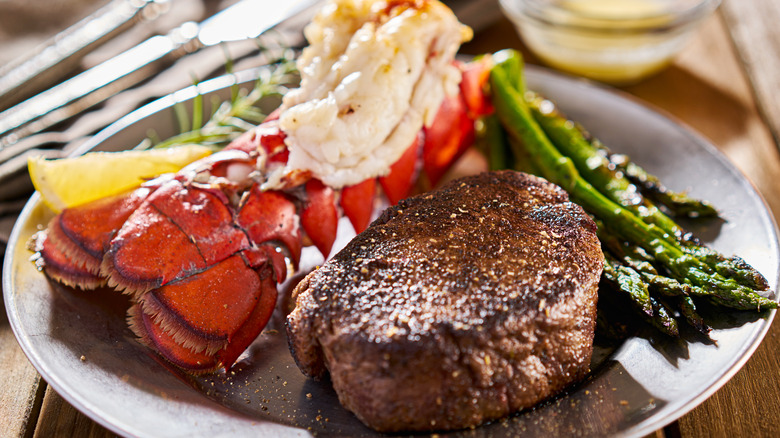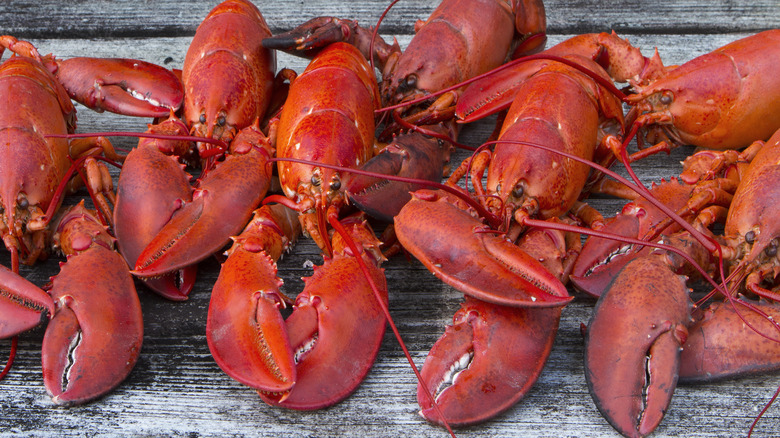The Bizarre Reason Lobsters Were Once Used As Fertilizer
Lobster has earned a place in the pantheon of fine dining items that includes staples like premium cuts of steak and foie gras. In fact, lobster — or, more specifically, lobster tails — often comprise the "surf" component of the traditional surf and turf meal on many restaurant menus. However, what you need to know about lobster is that it wasn't always so coveted in fine dining settings.
A food this highly sought after comes with an expensive price tag, especially when consumer demand is coupled with overharvesting and a longer growing cycle (via Seafood University). When you consider that it may be up to seven years before a lobster reaches minimum harvesting size, you can start to understand why wild populations aren't being quickly replenished.
Additionally, the process of harvesting and storing lobsters safely is a very involved one requiring costly technology and specialized equipment to keep the lobsters alive until they are sold to restaurants or retail. But much like other gourmet foods that have climbed the social ladder over the centuries, such as caviar, lobster wasn't always so highly valued, and it was once even used as fertilizer.
Lobster used to be cheap and plentiful
When European settlers first reached the shores of America, lobsters were significantly more abundant than they are today, according to History.com. The crustaceans also used to be much easier to collect and harvest for a meal, sometimes amassing along the New England shoreline in two-foot piles of shells and claws ripe for the picking. This embarrassment of riches led lobster to once be viewed by early colonists as a poor man's food commonly served to enslaved persons, prisoners, and apprentices during the colonial era.
Native Americans would cook lobsters right on the beach, wrapping them in seaweed and baking them over the rocks. And because they were so numerous, Native Americans found another practical application for the lobsters as well: for fertilizing their crops.
The transition from lobster as fertilizer and a cheap meal to a billion-dollar industry was a gradual one; things began to change in the mid-1800s with the emergence of canned food and railways that allowed lobster to be transported long distances without spoiling, per Business Insider.
Word spread about lobster, and wealthy diners in New York City and Boston developed a taste for the shellfish in the 1880s. Lobster's popularity continued to surge from there, and for all the reasons referenced above, lobster has now evolved into a delicacy that will put a dent in your wallet.

